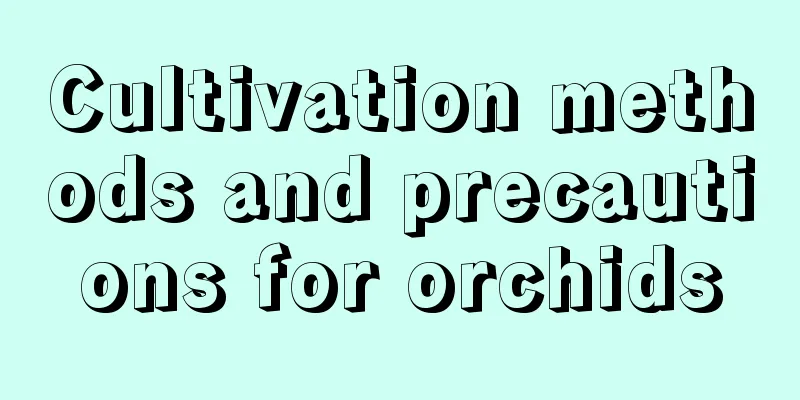Cultivation methods and precautions for orchids

Dormant period maintenanceBecause the temperature is low in winter, it will enter a dormant period early, about sixty days. If it is well maintained during its dormant period, it will grow better after completing the dormant period. First of all, the amount of water must be strictly controlled. Water can only be added when the soil is dry, and it cannot be increased at will. To ensure that the plant can be exposed to light when the temperature is not high during the winter, but avoid exposure to the sun, the potted plant should be kept away from direct sunlight in the afternoon. Potted PlantingBefore carrying out potted cultivation, you must first choose suitable seedlings. Generally, try to choose seedlings with large and thick roots and stems. Plant them in pots around spring and they will bloom two months later. When choosing soil, you should give priority to using a mixture of humus and sand for cultivation. First, spread a layer of fine sand on the bottom of the pot. When cultivating bulbs, just expose the roots a little. During the growth period of the plant, it should be placed in a cool place to avoid direct sunlight. When watering, you should first test whether the soil and the roots of the plants are moist. If they are dry and cracked, water them in time. However, if this is not the case, you do not need to water them. If watering is too frequent, the temperature of the plants will rise, the stems and leaves will grow faster, and flowering will be affected. As for fertilization, top dressing can be applied two to three times in addition to the flowering and growth periods. PrecautionsIt blooms twice a year, so proper management is required before the flowering period begins. When it is growing well, the rhizome will grow rapidly, so you should change the pot to a suitable one at any time. When changing the pot, since the plant has grown for one to two years, the nutrients absorbed from the soil will be insufficient, so you should not only change the pot, but also change the soil to ensure that the plant can absorb nutrients and nutrition normally and grow better. |
<<: How to grow potted Japanese cherry blossoms
>>: How to divide the Avalokitesvara yinensis
Recommend
How often should potted morning glory be watered?
1. Spring watering As for morning glory, it can u...
Can I grow blueberries at home?
Can I grow blueberries at home? You can grow blue...
What are the cultivation methods and precautions for water-grown aloe vera?
Aloe vera growth habits Aloe likes to grow in per...
How to grow bluebird flowers
1. Breeding environment 1. Watering: It is not dr...
How to grow peppers on the balcony
Prepare the Materials Pepper seeds, flower pots, ...
Green tea is divided into several types
1. Roasted green tea This type of green tea is dr...
The difference between European rose and Chinese rose
1. Differences in flower types The flower shapes ...
Do roses like sunshine? Do they prefer sunshine or shade?
Do roses like sunshine? Roses love sunlight and l...
How to propagate the bright grass
Seeding propagation of Huanliang grass The sowing...
Things to note when repotting Clivia, when to water after repotting Clivia
1. Notes 1. Time: The choice of time to repot is ...
How to Build a Simple Small Greenhouse
Types of small greenhouses (1) Plastic shed. If t...
The causes and treatments of yellow leaves of roses
1. Flower soil reasons 1. Reason: The yellow leav...
How to care for Yushu in winter? Winter cultivation methods and precautions
Is Yushu afraid of freezing? The best growth temp...
Should potted peonies be watered in winter?
1. Do you need to water? Generally speaking, wint...
How to grow cucumbers to achieve high yield?
Cucumber has a cultivation history of more than t...









